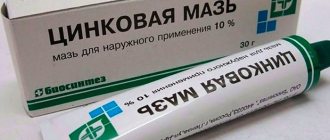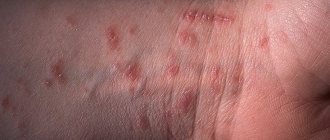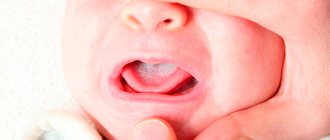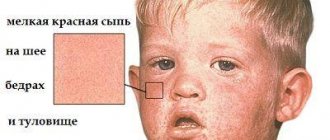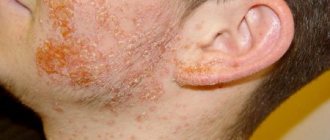Last update: 01/14/2020
Spring has come, warmth has finally begun, the sun has shone, the days have become bright and long. For us, not spoiled by the sun's warmth and light, the arrival of spring is especially dear, because we are so tired of winter frosts, snowfalls and darkness, as well as their companions: apathy, fatigue and drowsiness.
But for some reason, the sad mood does not leave us even in the spring. Nothing brings joy, you want to sleep all the time and there seems to be no strength left at all... It’s a familiar state, isn’t it? Many of us experience this when spring arrives. If we add to these symptoms such as deterioration of the condition of hair, nails and skin, irritability, fatigue, there are signs of a common seasonal disease - spring vitamin deficiency. Let's take a closer look at what kind of disease this is and how to prevent spring vitamin deficiency.
What it is?
It so happened that vitamin deficiency is popularly called all conditions associated with a lack of vitamins. The child’s skin on his hands began to peel off - vitamin deficiency, he began to get sick more often - vitamin deficiency. This is a big mistake, and let’s immediately differentiate the concepts: what causes peeling of the skin and other symptoms of vitamin deficiency is called hypovitaminosis, that is, partial deficiency, and real vitamin deficiency is the complete and total absence of a certain vitamin in the body.
Doctors around the world consider vitamin deficiency to be a very dangerous condition. If a child’s lack of essential vitamins is not identified in time and is not eliminated, then the lack of a specific essential substance can lead not only to disability, but also to the death of the child.
Another myth that also needs to be dispelled immediately when talking about childhood vitamin deficiency and hypovitaminosis is the widespread belief that it is enough to drink “vitamins.” No matter what the manufacturers of children's multivitamins, juices and baby food promise you on the screens, you cannot treat vitamin deficiency on your own. This is life threatening . Only a doctor can tell which vitamins are missing and how much and where to get them from.
Attempts to feed your child “vitamins” on your own can end disastrously, because with an excess of certain vitamins (hypervitaminosis), the consequences for life and health can be devastating.
What will the doctor advise?
Vitamin deficiency is a fairly serious disease, since if left untreated it leads to serious consequences. You should not resort to self-medication. The positive point is that if the cause of vitamin deficiency is poor nutrition, then the disease is quite easy to cure by making timely adjustments to the daily menu.
A nutritionist will indicate the type of vitamin deficiency, and he will prescribe the necessary nutrition program. A complete diet will include those foods whose absence has caused vitamin deficiency. A vitamin diet involves minimal processing of foods for the best preservation of nutrients. It is recommended to consume fruits and vegetables raw, boiled, stewed or baked. Numerous cereals and grains will be needed - valuable sources of important elements.
Additionally, multivitamin complexes are offered for the treatment of vitamin deficiency. Modern pure vitamins come in the form of capsules, powders, liquids and tablets; in severe cases, vitamin injections may be required. Such drugs are well absorbed, easily compensate for the lack of substances and have no side effects. You can take vitamin complexes only after consulting a doctor. Each drug is selected individually. Therapy with drugs purchased independently may not bring the desired effect, and in extreme cases it will provoke hypervitaminosis - an overdose of the vitamin, which is also fraught with health problems, especially in children.
The best prevention of vitamin deficiency is a balanced diet every day! Don't forget to put fresh vegetable salads and seasonal fruits on the table.
Causes of vitamin deficiency
Now that we distinguish hypovitaminosis, which is widespread among children and adults, from vitamin deficiency, which is less common, it becomes clear that its main cause is advanced hypovitaminosis. If we talk about why the child initially developed vitamin deficiency, then the list of reasons will be substantial.
It all depends on what vitamin deficiency the baby is experiencing, although one cannot help but name common universal reasons:
- eating disorders, lack of certain foods, vegetarianism;
- frequent consumption of carbohydrates and grains that have undergone grinding;
- improper preparation of food, storage of products in which substances valuable to the child’s body are destroyed even before they enter the body (some foods cannot be frozen, and some cannot be boiled);
- stress, heavy physical activity, illness, living in cold regions increase the need for vitamins by about 50-60%, and if this is not taken into account, a deficiency will certainly appear;
- impaired absorption of vitamins as a result of gastrointestinal diseases, as well as while taking antibacterial drugs.
Each type of vitamin deficiency has its own specific causes.
- Lack of vitamin A - the child has little protein and carotene in his diet, he consumes little animal fat, he is physically exhausted or has been in a state of extreme emotional exhaustion for a long time. A lack of this vitamin can be a consequence of past infections, and can also accompany enteritis and colitis in chronic form, pathologies of the liver and thyroid gland.
- Vitamin C deficiency - the child eats little fresh greens, vegetables, fruits, food for him is carefully and for a long time subjected to heat treatment. This form of vitamin deficiency develops with the abuse of baked goods, bread, as well as with significant mental and intellectual stress.
- Lack of vitamin B1 - there is no wholemeal flour in the diet, the child eats only polished cereals. This form of hypovitaminosis occurs among northern peoples due to eating raw fish for a long time, as well as among all other peoples if the child is given too much protein food. Such deficiency often accompanies thyroid disease and diabetes.
- B2 deficiency – dairy products and protein are absent or present in the child’s diet, but in very small quantities. Often develops in diseases of the pancreas, intestines, and liver.
- B3 deficiency - the child is exposed to the sun too often and for a long time, eats a lot of corn, and not enough protein. This form of hypovitaminosis is also typical for children taking drugs for the treatment of tuberculosis.
- B6 deficiency is a characteristic condition for children with intestinal and stomach diseases.
- Lack of B9 - develops against the background of long-term use of antibiotics, after intestinal operations, as well as in children who eat food that has been exposed to high temperatures for too long
- Lack of B12 - vegan child, vegetarian. Often this form of deficiency occurs with chronic infection with worms and chronic lesions of the gastrointestinal tract.
- D deficiency – lack of sunlight, rare exposure to fresh air, low consumption of animal fat, lack of calcium salts, phosphorus.
- K deficiency – low amount of fat, eating low-fat foods, blood and intestinal diseases, long-term use of antibacterial agents and anticoagulants.
The essence of therapy is to introduce the required substance into the body. Better with food, sometimes topically, in the form of an ointment, sometimes in tablets or injections. The food method is preferable, because it is in the intestines that vitamins are absorbed. The medications are prescribed by the doctor. Self-medication is unacceptable.
Causes of vitamin deficiency
Factors that can provoke the development of vitamin deficiency are divided into exogenous (external) and endogenous (internal). The first group also includes errors in nutrition and the effects of certain provocateurs on the human body.
Thus, vitamin deficiency with non-pathological etiology can be a consequence of:
- poor nutrition;
- irrational introduction of complementary foods into children's menus;
- fasting;
- strict diets;
- consumption of low-quality, spoiled products;
- improper storage of products;
- incomplete or irrational heat treatment of food;
- taking medications that disrupt the vitamin balance or reduce the absorption of nutrients into the blood.
Severe vitamin deficiencies can develop against the background of:
- unsatisfactory or extreme living conditions;
- constant stress;
- any type of addiction;
- increased physical activity.
Vitamin deficiency can develop if the patient has certain diseases or pathological conditions:
- disorders of the digestive tract;
- incomplete development of the gastrointestinal tract in children;
- endocrine disorders;
- reduced immunity;
- vitamin absorption disorders;
- parasitic infestations;
- intestinal dysbiosis;
- renal and hepatic pathologies.
Signs
Regardless of which vitamin is missing, children begin to feel and look worse - they get tired faster, they are drowsy, irritable, and have poor appetite. It should be understood that symptoms appear even when the lack of vitamin is significant, and if not equal to vitamin deficiency, then it is at the level of severe hypovitaminosis.
Mild forms of vitamin deficiency are rare and can be detected by laboratory testing of the blood of a young patient.
- If a child does not have enough vitamin A, then his vision usually suffers, so-called twilight blindness is observed, and there are flaws in color perception. Hair becomes brittle and may fall out, and the skin becomes dry. Light stripes and irregularities may appear on the nail plates.
- With a lack of ascorbic acid (vitamin C ), gums bleed, molars may fall out, and bruises easily remain on the body, even with slight pressure or a light touch.
- With a lack of vitamin B1, dry skin and neuritis develop, the child’s legs begin to perceive heat and cold worse, the sensitivity of the skin on the legs decreases, and calf cramps develop. Sometimes the so-called edematous form develops, in which the heartbeat is disturbed, shortness of breath appears, and there is visible swelling.
- With a lack of vitamin B3, the skin becomes darker and becomes very flaky; it feels rough to the touch. Red spots form on the baby's hands. The tongue is hypertrophied, its color is rich crimson. There are neurological disorders and loose stools.
- Children with vitamin B6 deficiency often develop conjunctivitis, dry and flaky lips, and cracks in the corners of the mouth (angulitis). Visual acuity decreases. And babies who are acutely lacking vitamin B12 often suffer from B12-folate deficiency anemia - hemoglobin in the blood drops, there are signs of gastritis with low acidity of gastric juice.
Signs of deficiency by vitamin group
Let's look at the symptoms by which you can determine which element your child is missing:
1. Vitamin E deficiency. Typically, a deficiency of this element is observed in infants who are on artificial nutrition. Vitamin E deficiency can only be detected in a laboratory. Since the signs are not expressed.
2. Vitamin A deficiency. Signs: dry skin, pustules and rashes, dry mucous membranes.
3. Vitamin B1 deficiency. The baby has serious disorders in the functioning of the nervous and cardiovascular systems. The child experiences convulsions and involuntary muscle contractions. The amount of urine also decreases. There is nausea and vomiting. There is a decrease in appetite.
4. Vitamin B6 deficiency. The child is weak, lethargic, has convulsions, stomatitis in the mouth, and dermatitis on the skin. At the same time, the tongue is bright red.
5. Vitamin B2 deficiency. Signs: a sharp decrease in body weight, insufficient growth, spots on the face and body, peeling. The child's behavior is sluggish, inhibited, and there is a lack of coordination of movement. Can be excitable and irritable.
6. Vitamin C deficiency. Scurvy occurs, symptoms of the disease are present (tooth decay, bleeding gums). Swelling also appears, and wounds take a long time to heal. The child is whiny and irritable.
7. Vitamin D deficiency. Usually appears in children under one year of age. Rickets occurs. Signs: very thin limbs, bone deformation, severe protrusion of the abdomen.
8. Vitamin K deficiency. Frequent bleeding and bleeding gums are observed. The child develops bruises on his body. Hemorrhages can occur in internal organs and in the brain.
9. Vitamin PP deficiency. Signs: weakness, fatigue, diarrhea. Crusts and blisters may appear on the skin. Also, the child’s mouth and tongue become inflamed, and the skin becomes thick and folded.
10. Vitamin B12 deficiency. Weakness, decreased appetite and shortness of breath are signs of B12 deficiency. Hyperpigmentation, muscle atrophy, and mental disorders may also occur. The tongue turns bright red.
The main symptoms of spring vitamin deficiency
Summarizing all of the above, we can highlight the main symptoms:
- frequent and prolonged viral diseases,
- bleeding gums when brushing teeth,
- dryness and flaking of the skin,
- hair loss and dryness,
- peeling and brittleness of nails,
- decreased vision,
- failure in the digestive system,
- bad breath,
- numbness of the arms and legs, tingling in the limbs,
- fatigue, lethargy and apathy,
- decreased performance,
- memory impairment,
- increased irritability, depressed mood,
- insomnia.
Treatment of vitamin deficiency in children
How to treat vitamin deficiency in children?
After all of the above, it is obvious that vitamin deficiency is a serious problem that is important and needs to be eliminated.
The diagnosis is made by the doctor after passing the necessary tests. Many symptoms of vitamin deficiency are similar to other diseases. It is very important to exclude other diagnoses - for example, allergies and dermatitis.
Treatment involves adjusting the diet and, if necessary, prescribing vitamins in the form of injections or food supplements.
An integrated approach to the treatment of vitamin deficiency is important. A small child does not tolerate many symptoms of the disease well: he is bothered when the skin is dry and itchy. In these cases, La-Cri products are perfect for you. The line includes cream, emulsion, gel for washing, shampoo.
All La-Cri cosmetics are non-hormonal and contain natural ingredients. It is designed specifically to relieve itching and irritation, nourish the skin and combat dryness. The products can be used in the treatment of vitamin deficiency in children and as preventive measures to make the baby’s skin healthy.
La-Cri cosmetics can mitigate or eliminate many symptoms of atopic dermatitis on the face
How to deal with seasonal vitamin deficiency?
With the onset of cold weather, many people are plagued by constant fatigue, blues, and drowsiness. Hair becomes dull, nails become brittle and stained. Cracks appear in the corners of the mouth and gums, and colds become more frequent. These symptoms indicate winter vitamin deficiency, when the body lacks a complex of vitamins.
- Properly organized nutrition can defeat it. Hot food containing the main food groups should be consumed 4 times a day. In addition, you need to arrange fortified snacks consisting of fruits and vegetables.
- In winter, store shelves are full of various fruits. Treat them with caution. Out of season, they contain few useful substances, and sometimes none at all. Getting rid of vitamin deficiency and treating this problem will be successful if you regularly eat radishes, persimmons, parsnips, citrus fruits, and root vegetables. In winter, they contain the highest concentration of valuable substances.
- On frosty days, people experience an increased appetite. To quickly satisfy their hunger, some people choose fast food. But this is not at all the food that the body needs for health. Include avocados, a little olive oil, various nuts, dried fruits, and cereals in your diet. These products will strengthen the immune system and prevent vitamin deficiency on the skin.
- When it's cold, the body spends a lot of resources to keep warm. This takes away moisture, which is important to replenish. Therefore, do not forget to drink 2 liters of clean water per day. This is more difficult to do in winter than in spring or summer, but you need to try to maintain your health.
It is advisable to limit the amount of sugar in food. Scientists have proven that it greatly reduces immunity. In winter, when the body is weakened, this is most dangerous. Try replacing sugar with honey, it's tasty and healthy. In this case, it is necessary to exclude the possibility of an allergy to the beekeeping product.
Spring vitamin deficiency occurs in many people. To prevent it, freeze vegetables and berries in the summer or fall. Eat them regularly. Vitamins cannot be accumulated; they must be supplied to the body daily. Then there will be no reason to wonder how to treat vitamin deficiency.
Walk outside more often. On weekends, head to the forest to enjoy the fresh, healing air. Try to use public transport less often, walk more, it is very useful. Take short walks in the evenings. They will make you sleep soundly and quickly relieve chronic fatigue.
Symptoms
Dangerous consequences can be avoided if the disease is detected at an early stage and treatment is started immediately.
Symptoms include:
- Skin problems. In the photos of sick children, skin rashes are observed - dermatitis, psoriasis with characteristic peeling on the hands. Eczema and ichthyosis cause a constant feeling of burning and itching in the child.
- Disruption of the digestive system. Attacks of nausea, vomiting, lack of appetite due to weight loss are all signs of vitamin deficiency.
- Change in hairline. If you look at children who have suffered from vitamin deficiency for a long time, partial or complete baldness is noticeable in the photo. Hair becomes thin, brittle and falls out.
- Dental problems. The rate of tooth loss during disease increases significantly. In this case, there is increased bleeding of the gums.
- Inhibition of development. Physically, this is manifested by dystrophy and convulsive muscle contractions, and a visible growth disorder. The baby feels pain in the limbs. Symptoms are characterized by decreased mental activity.
- Sleep disturbance. Throughout the day, the child feels tired, absent-minded and irritable. Night sleep does not bring relief: the baby wakes up and tosses and turns.
- Atypical taste preferences appear. Children unknowingly compensate for the lack of vitamins. This is expressed in the use of chalk, earth, sand and other “products”.
- psoriasis treatment in Israel
Symptoms of vitamin deficiency
The skin variant of vitamin deficiency has the following symptoms:
- dry skin;
- pronounced peeling;
- widespread formation of cracks allows one to see vitamin deficiency on the legs and arms in the photo;
- tendency to form purulent-septic processes at the site of skin damage;
- pinpoint rash, diffuse or localized on the hands and feet;
- skin pigmentation;
- hyperemia in the form of spots;
- delamination of the nail plate;
- intense hair loss;
- manifestation of a pronounced vascular pattern.
These manifestations are usually accompanied by itching, burning or a crawling sensation
, which is also the main sign of vitamin deficiency in the legs.
Therapeutic and preventive measures
The manifestation of vitamin deficiency requires immediate restoration of the level of useful components in the body. If the child’s condition is normal, it is enough to simply adjust the diet, add physical activity and spend more time in the fresh air. These recommendations necessarily include such a necessary measure as the prevention of vitamin deficiency in children.
The method of treatment is selected individually, depending on which component deficiency is observed. In most cases, it is enough to fill the child’s diet with the right foods.
Foods that contain vitamin A are low-fat fish, red and orange vegetables, berries, and herbs. You can dilute the diet with butter, apricots and peaches.
B vitamins are found in grains and legumes. A considerable number of them are found in meat and fish products. Experts recommend consuming dairy products and grains.
Vitamins E and D are found in sufficient quantities in fish oil. There is a lot of tocopherol in cereals and vegetable oil. To compensate for K deficiency, spinach, green tomatoes and cauliflower varieties are suitable.
As a competent addition, experts recommend normalizing your daily routine and engaging in physical activity. To feel good, a child needs to get enough sleep and strengthen the body. For this purpose, it is recommended to do gymnastics, jogging and just long walks in the fresh air. Our consultation for parents on how to prevent spring vitamin deficiency →
Causes of illness in children
Why does vitamin deficiency occur in a child? There can be many reasons. The disease occurs due to genetic and environmental factors, unfavorable factors, and hidden chronic diseases.
Also, vitamin deficiency in a child can occur due to problems with the digestive system, as a result of which vitamins are not absorbed.
Diseases of the thyroid gland can lead to a similar illness in a child. Vitamin deficiency can be caused by parasites in the body.
Decreased immunity and metabolic disorders can also lead to the development of the disease.
If a child is fed food that contains few vitamins, then the appearance of this disease is possible. Hypovitaminosis may also occur due to a monotonous diet that lacks vegetables, fruits and certain categories of foods.
If a child is treated with medications, they can destroy beneficial elements or prevent them from being absorbed in the gastrointestinal tract. As a result, the baby will develop a similar disease
How to understand which component is missing in the body
Hypovitaminosis is a condition that is accompanied by a lack of vitamins in the body.
The deficiency of each useful component is accompanied by certain symptoms:
- Lack of retinol . This is a fat-soluble vitamin responsible for the integrity of the skin and mucous membranes. In case of vitamin A deficiency, the skin becomes dry, cracks and small wounds appear on the hands. It is possible that the condition of the hair will deteriorate and the development of inflammatory processes in the organs of vision.
- Thiamine deficiency manifests itself in growth retardation, poor appetite and memory impairment. With a deficiency of vitamin B1, the child sleeps poorly and does not have the strength to perform usual activities.
- A lack of riboflavin is accompanied by inflammation and wounds on the lips and tongue. The appearance of rosacea on the skin is possible.
- A lack of ascorbic acid can manifest itself as fatigue, inflammatory processes on the gums and ulcers on the mucous membranes of the oral cavity.
- A lack of vitamin D leads to thinning of bone tissue, which increases the likelihood of developing rickets. The child experiences convulsions and weakness. Deviations in physical and mental development are possible.
Traditional methods of preventing vitamin deficiency
Traditional medicine offers many natural and tasty remedies to replenish the lack of vitamins in the body. These gifts of nature can become a truly effective remedy for those who are looking for an answer to the question: how to prevent vitamin deficiency in the spring?
Rosehip, hawthorn, black currant, raspberry, blueberry, lingonberry, viburnum - all these garden and wild berries contain vitamins that we need so much in the spring. Aromatic liqueurs, homemade juices, fragrant jams with minimal heat treatment, “quick” compotes, dried apples and pears from your own garden are a real storehouse of vitamins and nutrients.
They will not only support you with vitamins in the winter and spring, but will also help strengthen your immune system and cope with infections during widespread epidemics of ARVI.
If you add teas from medicinal herbs such as lemon balm, mint, nettle, raspberry leaf and black currant to these tasty remedies, consider that you have in your hands a powerful shield that can ward off ailments such as vitamin deficiency and seasonal respiratory diseases.
The use of specialized vitamin complexes
In advanced cases, it is not possible to restore the deficiency of useful components through food and additional physical activity. If severe symptoms of vitamin deficiency appear, it is advisable to switch to taking specialized vitamin complexes. On the modern market, Alphabet, Pikovit and Vitrum are considered the most affordable and highly effective.
Alphabet
Complexes from this manufacturer help strengthen the body and are the best preventative against vitamin deficiency:
- Our Baby . Available in sachets in powder form as a dietary supplement during meals for children 1-3 years old. The package contains three types of sachet packages (1 - vitamins D, B12, pantothenic acid, calcium; 2 - B2, B6, E, PP, C, beta-carotene, magnesium, zinc, iodine; 3 - B1, C, folic acid, beta-carotene, iron).
- Kindergarten . This is a complex of vitamins (B1, B2, B12, B6, C, D, K, E) and minerals (magnesium, zinc, manganese, iodine, calcium and iron), which is intended to replenish the deficiency of useful components in the body in the form of chewable tablets with fruity taste. Contains all the substances necessary for a child aged 3-7 years. The tablets are also divided into 3 types, differing in composition.
- Schoolboy . The package contains 60 tablets of three different types with different tastes, which include various vitamins and minerals (cherry - C, B1, A, folic acid, iron, copper; orange - C, A, E, PP, B2, B6, magnesium , selenium, zinc, iodine; banana - B5, B12, folic acid, D3, calcium). Designed for children aged 7 to 14 years to help balance nutritional deficiencies.
Pikovit
In the pharmacy you can find a universal remedy with the same name, suitable for children of different age groups. Contains a full complex of vitamins (A, group B, C) and is approved for use from the age of two. Helps compensate for the deficiency of useful components and prevent the development of vitamin deficiency. Improves overall well-being and energizes.
There are also vitamins Pikovit 1+ (in syrup form), 3+, 4+, 7+.
Preventive measures. What can parents do?
How to prevent spring vitamin deficiency?
1. It is necessary to normalize the child’s nutrition. Introduce more fresh fruits, dairy products, vegetables, fish, dried fruits and meat into his diet.
2. You should walk in the fresh air more often.
3. It is necessary to give vitamins; by the way, for vitamin deficiency in children, they are also prescribed.
4. It is necessary to limit the consumption of unhealthy foods (for example, hamburgers, pizza, soda).
We treat the disease with natural vitamins!
Now we’ll tell you what should be included in a child’s diet if there is a shortage of one or another element. If there is not enough vitamin B1, then add peas, wholemeal bread, bran (rice, wheat, oatmeal).
A child who is deficient in vitamin A should eat the following foods: sorrel, apricots, cod, carrots, peaches, fish oil, milk, liver, red peppers, spinach, butter, gooseberries, lettuce, egg yolk, black currants, parsley .
If there is a lack of vitamin B2, it is useful to eat cereals, peas, offal (stomachs, liver), eggs, and milk.
If a child has a vitamin D deficiency, then fish oil and egg yolk should be added to the diet. It is also beneficial to walk on sunny days.
If there is a lack of vitamin E, you should add meat, cereal sprouts, milk, green parts of plants, vegetable oil, fat and eggs to your diet.
In order to saturate the body with vitamin K, you should eat cauliflower, spinach, vegetable oils, rose hips, and pork liver.
If you are deficient in vitamin PP, add buckwheat, liver, kidneys, fruits, fish, milk, vegetables, and meat to your diet.
Children who are deficient in vitamin B6 should eat bananas, legumes, cereals, fish, meat, liver and kidneys.
If you have a B12 deficiency, you need to add organ meats (kidneys and liver are especially useful) and soy to your diet.
If there is not enough vitamin C, then you need to add citrus fruits, peppers, rowan berries, strawberries, black currants, potatoes, cabbage, strawberries, spinach, and horseradish.
Cracks in the corners of the mouth
Vitamins E, group B and partly ascorbic acid are responsible for skin health.
Vitamin B6 deficiency can manifest itself as skin diseases, including peeling of the lips or inflammation of the tongue, as well as the development of depression or increased anxiety and irritability. A limited intake of this water-soluble vitamin usually leads to unpleasant symptoms within a few weeks. Some types of birth control pills, corticosteroids, and anticonvulsants also pose a risk of vitamin B6 deficiency. People under 50 years of age need 1.3 mg daily, while older women need 1.5 mg and older men 1.7 mg. Dietary sources of this vitamin include chickpeas, tuna, salmon, fortified cereals, bananas, nuts and seeds.
How to choose vitamins?
Now there is a fairly large selection of vitamins. Therefore, mothers do not know what to choose for their baby. Now we will give advice on choosing. The following drugs are suitable for a child under two years of age: “Multi-Tabs” (children), “Pikovit”, “Kinder Biovital”, “Pangexavit”, “Vetoron”, “Multi-Tabs Baby”.
What vitamins should I give for children aged 2 to 5? For example, ". Also suitable for a child are “Unicap U” and “Alphabet Kindergarten”.
We have already found out which vitamins are suitable for children from 2 to 5 years old. And if the child is older, then what complexes should be used? The following are suitable for the prevention and treatment of this disease:
- "Multi Tabs Classic";
- "Oligogal";
- "Vitrum";
- "Vitrum Plus";
- "Centrum" (children);
- "Alphabet";
- "Triovit."
Risk group
Who is susceptible to this disease? Teenagers who are going through puberty, small children, people who abuse alcohol and cigarettes. Also at risk are pregnant and lactating women, as well as girls who are on strict diets. In addition, the following are susceptible to vitamin deficiency:
- people who have suffered serious illnesses or surgeries;
- vegetarians;
- people with excessive stress (either mental or physical).
Hypovitaminosis can also be caused by stress or taking certain medications that destroy beneficial elements, preventing them from being absorbed by the body.
When a baby is not fed breast milk, but goat or cow milk, or is given the wrong formula, he may develop a similar illness. Vitamin deficiency can also appear due to improper complementary feeding or its introduction too late.


